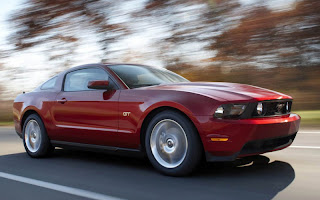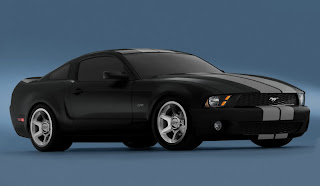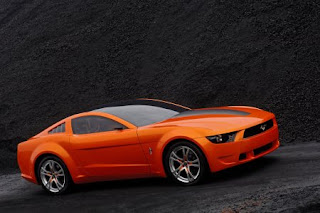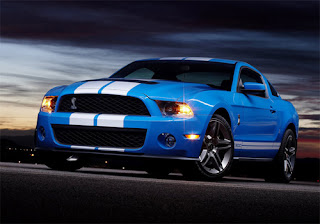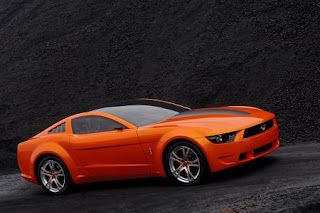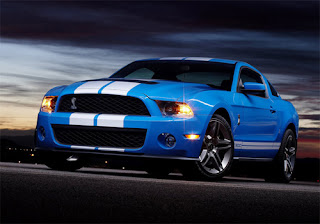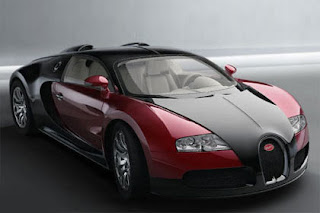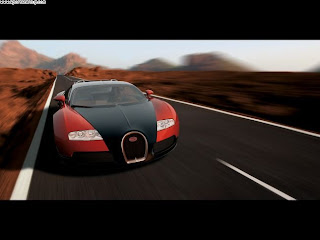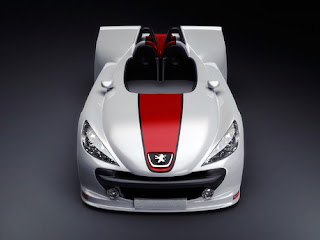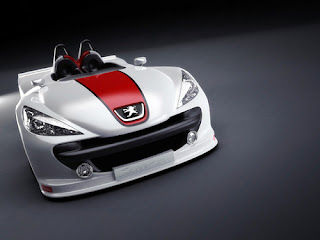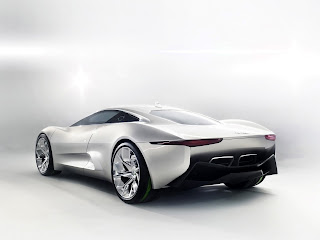2011 Jaguar XF Black Pack, New Honda PUYO Concept Car, 2010 Lamborghini Sesto Elemento Concept, Motorcycle Accidents, Car Styling, NEW BMW K 1300 GT EXCLUCIVE EDITION
Monday, July 26, 2010
Friday, July 23, 2010
Split hoods and split bonnets
 Split hoods and split bonnets
Split hoods and split bonnets As you can imagine, a lot of consternation arose when I mentioned doing a section on split hoods and bonnets. Bre wanted to know how that makes your car go faster, and he's got a point, it does nothing for car performance; but it's a must have for a customized show car. While it may have nothing to do with car performance, it has everything to do with car customization and is ideal for our section on pimped out cars. It also goes to show that with a little imagination mundane looking car parts can be turned into something realy unique!
For those of you who might not know what we're talking about, a split hood is a hood consists of two halves and opens from the middle like French doors. While a conventional hood is hinged either at the back or the front of the hood, a split hood is hinged at the sides, allowing it to open from the middle to each side. It's the latest craze at the car shows but split hoods date back to the 1920's and 1930's when they were stock items on cars such as the 1929 Ford Model A sedan and the 1939 Plymouth P8 DeLuxe. Only those were more practice as they were hinged from the middle and opened from the sides. On this page we'll look at split hoods and fitting a split hood kit but be warned, this is a fairly simple job but requires a fair amount of skill and is intended for show cars and not street cars!
PLANNING
Planning is a crucial part of fitting a split hood. Begin by removing the sound deadening material on the underside of your hood so that you can see the support braces that give the hood its rigidity. The idea is to split the hood without losing rigidity so you may need to weld additional support braces, especially along the split, to regain rigidity.
When it comes to making the split, you've got quite a bit of choices. You can go for a straight cut down the middle, an off center diagonal cut, a curved cut, a zig zag cut, or any other imaginable shape. But the easiest yet still most impressive split hoods are the off center diagonal cut and the 'S' shaped curve cut.
You also need to take into consideration the location of the hood release catch as you still need to close the hood. On anything other than a straight cut the hood release catch must be on the part of the hood that will be your leading edge as the leading edge will rest on the other part of the hood. On a straight cut or a cut that is in the middle of the hood release catch, you will need to replace or move the hood release catch.
SPLIT THE HOOD
Once you've planned your cut, mark it out on the hood with heavy duty masking tape. Then take an angle grinder or jig saw carefully cut through the outer sheet metal on the hood and the support braces below it. The angle grinder is best if you're going for a straight or curved cut, while the jig saw is better for making zig zag cuts and shapes with sharp bends.
Now you need to weld an overlapping seam on the underside of the half of the hood that is not the leading edge. The leading edge will rest on this overlapping seam and hold it down as the leading edge is the part that has the hood release catch. This part may be a little tricky as you need a fairly flat overlapping seam. Therefore you may need to remove some of the support braces near the edge so that the hood can close flush. You may also need to add a support brace along the seam to increase rigidity.
Once that's all done, you'll need to repaint the hood to protect the cut against corrosion and to give it a nice finish. You can also replace the sound deadening material once the hood has been repainted.
REFITTING
Now it's time to refit the hood. You'll need a split hood kit to refit the hood or you can fabricate your own hinges and opening mechanism. Some split hood kits come with articulated opening mechanisms and some come with remote openers, but fabricating your own kit is a viable option. All you need are hinges that will be fixed to the inside of the front wings (i.e., the front fenders) and the spring mechanism and counter balance pistons from a car trunk. The counter balance pistons will allow you to balance the split hood against the spring tension so that you have a smooth hood opening action.
When you fit the hinges remember that the hood must open without causing the hood to foul against the front wing. You also want to have a nice even gap on either side of the hood, as well as along the cut where the two halves meet.
Now when you pop the hood, the spring loaded hood release mechanism and the spring mechanism will allow the split hood to flip up smoothly.That's it then; another successful pimped out car customization from custom-car.us even if it is a bit more complicated than fitting a tilt hood kit, lambo doors and shaved door handles.
Car Styling
 Pimped Out Cars
Pimped Out CarsWelcome to the Custom-car.us guide to pimping out your car, pimped out cars and car styling in general. This section is for the more modern pimped out car fanatic and is not so much about car performance. In fact it has almost nothing to do with engine performance and engine tuning but it has a lot to do with car customizing to make your car look as hot as it goes. Pimping out your car has a lot to do with car modification, car customization and of course, pimped out cars, even if it has nothing to do with engine power! In this section we'll discuss ways in which you can personalize and customize your car to make it stand out from the crowd. However, despite our age, we're more into customizing cars to look good with style and class rather than what we consider the vulgarity of the "pimped out cars" on M-TV's "Pimp My Ride" series.
With this in mind, there are a number of simple things you can do to customize your car on the outside. These range from the simple fitting of aftermarket alloy wheels, tinting your car windows and applying stick on decals, that you can do yourself, to the more complicated fitting of front bumper kits, side skirts and rear wings. This will require a visit to the spray painter to match the color of your car. For the more adventurous, we also have the more complex fitting of scissor doors or lambo doors as some people call it, and designing of your own aero kit. This will again require a visit to the spray painter when it comes to fitting and matching your car's color; and while you're at it you might want to get a customized paint job.
But it does not stop there; you can also customize the inside by fitting sports seats or bucket seats, an aftermarket steering wheel and gear lever, as well as aftermarket instrument gages and aluminum pedals. Then of course is the ICE, a cool sound system with a pop-up DVD display or two!
However, there are two crucial things to keep in mind when customizing and pimping your car. Firstly, it's no good pimping your car in bits and pieces by slapping on piece here and another there because you will end up with a car that looks like a monstrosity. You need to have a vision of what you want to achieve with your car. You need a style or a theme that says something about yourself; it is called car styling after all. You could model your car on a muscle car theme for example or a JDM theme or even a motorsport racing team but be consistent with your theme all the way down to the detail on your dashboard, gear lever and other interior parts.
Secondly, where ever possible try to be original. Aftermarket wide body kits are great but are even better if modified with a little style to create a completely unique look. If you want to be even more original, you could fabricate your own body kit as long as it's done with style.In the following pages we'll discuss various aspects of car customization, from fitting aftermarket alloy wheels to the more complex design, creation and installation of aero body kits. We'll also be discussing car detailing and auto detailing to keep it looking at its best.
Perhaps one day we may even discuss the fitting of those silly undercarriage neon lights and those gross looking wheel "spinners" that detract from rather than enhances the beauty of your car, but it is not on the agenda for now and we make no promises. Let's get on with our car styling and car customizing by fitting lambo doors to our ride ...
Wednesday, July 21, 2010
Modified Car Insurance
 Modified Car Insurance
Modified Car Insurance
As far as car insurance companies are concerned, there are two types of modified street cars: show cars and street race cars. Show cars are likely to do extremely low mileage, usually in warm sunny weather, and are usually drives very carefully. They are also less likely to be stolen, and more likely to be garage parked at night. All of this is good new for your insurance broker. A street racer however is a different story. These cars are more likely to be abused, involved in accidents, driven in all weather, driven fast and at high RPM, stolen, parked in the street, and driven by 'boy racers'. As a result the insurance companies have to charge a large enough premium to cover any possible claim. How much the insurance increases deepens upon the type of modification.
Car modification can be performed at many levels; from small modifications such as fitting alloy wheels, to major modifications such as fitting a forced induction system. Small modifications are not likely to cause a great impact on your insurance premium and will only increase the value of your vehicle and increase the likelihood of it being stolen. Proper security measures, such as fitting an alarm system, and fitting lock wheel nuts to alloy wheels might help you avoid an increase in your insurance policy. However, major modifications and engine modifications will cause an increase in your car insurance premiums as they greatly increase the risk of the vehicle being involved in an accident. The insurance company might also quote with a higher excess when covering the risk of theft or accidents. Most insurance companies will consider other modifications, such as fitting performance exhaust systems, body kits, and lowering the suspension, on a case by case basis.
The important thing is to disclose your modifications. You may be tempted not to disclose the modifications you've made to your car, so that your premiums remain relatively low. However, this is not a wise move as, technically, you are not covered if you do not disclosed any modifications you've made. If you had an accident, the assessor from the insurance company can, and probably will void your insurance policy if the assessor notices any undisclosed modifications. And I'm not just talking abut engine modifications, even if you fit a set of alloy wheels, or a body kit after you have signed an insurance policy, you must disclose your modifications to you insurance company.
To find the best car insurance for your modified car, you'll need to do quite a bit of research. If the car is already modified, search the Web and phone around for the best modified car insurance quote you can get, based on the modifications made to the car. Remember to find out what the excess would be in case of theft and accidents. If you intend doing some modifications, contact your existing insurance company and find out how the modification would impact on your insurance premiums. Find out if another insurance company will offer you better premiums but remember to take the excess into account.
But it doesn't stop when you've got your modified cars insured. As I've mentioned earlier, car insurance companies determine your risk profile by placing you into a category that says something like "under 21 year old male driving a souped up Nissan 200SX has a high accident risk". This is because the driving behavior of other drivers in your age group and gender has resulted in numerous accidents that have cost the insurance industry. As a driver of a modified street car you have a greater responsibility to your fellow road users and your fellow modified car owners. You also need to have greater respect for your car. More power on wet roads means a greater probability of sliding and locking your brakes at a stop. What you can do is be a conscientious driver rather than a conservative driver and never kid around behind the wheel, never drive under the influence, never speed in residential areas, know when you can apply the power, and learn what to do when the car goes into a slide. An advanced driving course should do the trick for the latter as it takes a lot of courage and skill to turn a front-wheel vehicle into a slide, or to release and reapply the brakes when the wheels lock up. If you drive conscientiously, you would be less likely to be the cause of an accident and you would contribute to improving the image of car owners like you and me, and bringing down the premiums for modified car insurance.
You've got your modified car insurance covered but you're involved in a crash. Depending on the extent of the damage, your insurance company will determine if your car is a write off by comparing the estimated repair costs of the car against the estimated value of your car. If the estimated repair costs exceed the estimated value, the car is considered a write off. However, when it comes to modified cars, the estimated value of the car after the crash can become quite contentious. Most modifications will push up the amount of money you've spent on the car without adding a similar amount to the value of the car. Fitting a $5,000 stereo to a $2,500 car, for example, won't push the car's value up to $7,500. In such cases you may save a significant amount of money by keeping the parts for your next car. So it may be worth fighting the insurance company on their estimated value of your car. To do that you need to understand how the insurance company operates.
After the crash, the insurance company will usually take a few days to get the estimated value for your car. What the insurance company does is enter your car's information on a computer and send it off to an evaluation company, which then finds similar cars to yours that were recently sold and comes up with an average based on those cars' resale value. This value they send back to your insurance company. By the time the adjuster comes back with this value, you should have already done your own research. You need to look for recent sales information on cars similar to yours in model year, options, mileage, and aftermarket modifications. Look for cars that are in worse condition than yours but are going for a relatively high price as the insurance company will have a hard time arguing you down if a car with more mileage and less options than yours is going at a higher price than their estimate.All is not lost if the repair costs still exceed the value of the car. You can still keep salvage if you have a place you to store the car. The insurance company will deduct the salvage amount from your claim check if you keep salvage but you must move the car from the tow yard as soon as you reach settlement with the insurance company. Remember the insurance company is responsible for tow and storage fees up to the settlement date; after settlement date tow and storage fees become your responsibility.
Toyota
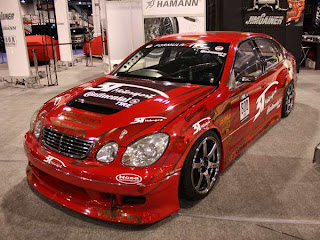
Like the other big Japanese car manufacturers, Toyota has been a popular candidate for car modification and show car projects. At any show car event you wouldn't just expect to see a modified Toyota Supa but also modified Toyota Carolla and Toyota Aristo cars. These days you can even expect to see a custom Toyota Prius Hybrid or two!
Below are some of the coolest Toyota show cars from around the world...
Tuesday, July 20, 2010
Testing and Tuning Nitrous Injection Systems

TESTING NOS SYSTEMS
Once you have your nitrous system installed, you must test the system to ensure adequate nitrous and fuel flow. This will ensure proper performance and reliability.
Start by ensuring that the fuel line is properly attached to the fuel solenoid and turn the fuel pump on. You can do this by turning the ignition key to the ACC position. Check for fuel leaks where you tapped into the stock fuel line and where the fuel line feeds into the fuel solenoid. Cure any fuel leaks, check again for fuel leaks and then disconnect the fuel line from the nitrous injector. Activate the system and check for fuel flow when the system is activated, and that the fuel stops flowing when you deactivate the system. If you don't get fuel flow, check that the fuel solenoid is operating properly — you should hear an audible click when the solenoid is activated; check that you have fuel flow at the fuel filter; and ensure that fuel line is not kinked, twisted or bent. If you do have fuel flow, turn the vehicle's ignition off and properly secure the fuel line to the nitrous injector.
Now open the release valve on the nitrous tank check for frost along the nitrous feed line. The frost will indicate a nitrous leak. If you find any leaks, close the release valve on the nitrous tank and cure the leaks. Open the release valve again and ensure that you've cured all nitrous leaks. Then disconnect the nitrous line from the nitrous injector. Activate the system and check for liquid nitrous flow when the system is activated, and that the nitrous stops flowing when you deactivate the system. If you don't get nitrous flow, check that the nitrous solenoid is operating properly; and ensure that nitrous line is not kinked, twisted or bent. If you do have nitrous flow, you can properly secure the nitrous line to the nitrous injector.
TUNING NOS SYSTEMS
Nitrous tuning is another simple procedure but you should first tune your engine without nitrous as you will be running without nitrous for most of the time. Tuning the nitrous system is quite straight forward — you start with the jet sizes recommended by the manufacturer of your nitrous system and gradually adjust the jet sizes until the air/fuel mixture added by the nitrous system is perfect.
So install the jet sizes recommended by the manufacturer of your nitrous system. This will be conservative and will err on the rich size (i.e., too much fuel), which is the safe side to err on. Run you engine for a while with the nitrous activated and then check each of your spark plugs to determine how the air/fuel mixture is burning. The correct air/fuel mixture will produce a brownish, grayish-tan color on the spark plugs. If the spark plugs have a sooty, black color, your air/fuel mixture is too rich and you should increase the nitrous jet to the next jet size. If the metal part of the spark plugs displays a bluish or rainbow coloration, go to a smaller nitrous jet size immediately. Repeat this test until your spark plugs display the correct color. Never jump up by more than one jet size on the nitrous side and never try to work your way down from a lean mixture — that's just looking for trouble and major engine damage. You can make more power by increasing the fuel jet size and then adjusting the nitrous jet size up until your spark plugs display the correct color again.
WARNING: Back off as soon as you get detonation and reduce the size of your nitrous jet!
You may also need to adjust your ignition timing as nitrous oxide makes the air/fuel mixture burn much faster than normal. Retard the ignition timing by 2° increments (i.e., less advance before TDC) until you feel a noticeable loss of power. Then advance the ignition timing by 2°.
Now that that's done, your nitrous system is installed, tested and tuned; all that's left is for you to enjoy responsibly — always enjoy power responsibly!
Installing a Nitrous Oxide System (NOS)
 Installing a NOS kit is a simple process of installing the nitrous tank; a few injectors (which are also called nozzles); and a few solenoids; routing a few meters of tubing (or piping) from the nitrous tank and a fuel line to the solenoids, and the solenoids to the injectors; and then fitting a few switches to arm the electrical circuit that energizes the solenoids. If you are installing a Dry System, you don't need to run a pipe from your fuel line to the fuel solenoid as you don't need to install a fuel solenoid but you will need to modify your EFI system to provide the correct amount of fuel when you engage your NOS system. In my experience, the best way to install the nitrous system is to install the nitrous tank first, followed by the injectors and the solenoids, then connect your feed lines, and connect your solenoids to the battery. This will ensure that each of its elements correctly placed to operate at their full potential. If you are installing a Wet System, you must test the system and ensure that the fuel pressure to your fuel solenoid is constant and adequate. This may require that you install a high pressure fuel pump and/or a fuel regulator.
Installing a NOS kit is a simple process of installing the nitrous tank; a few injectors (which are also called nozzles); and a few solenoids; routing a few meters of tubing (or piping) from the nitrous tank and a fuel line to the solenoids, and the solenoids to the injectors; and then fitting a few switches to arm the electrical circuit that energizes the solenoids. If you are installing a Dry System, you don't need to run a pipe from your fuel line to the fuel solenoid as you don't need to install a fuel solenoid but you will need to modify your EFI system to provide the correct amount of fuel when you engage your NOS system. In my experience, the best way to install the nitrous system is to install the nitrous tank first, followed by the injectors and the solenoids, then connect your feed lines, and connect your solenoids to the battery. This will ensure that each of its elements correctly placed to operate at their full potential. If you are installing a Wet System, you must test the system and ensure that the fuel pressure to your fuel solenoid is constant and adequate. This may require that you install a high pressure fuel pump and/or a fuel regulator.Begin by installing the NOS tank. The correct installation of the tank is important to getting the most out of your nitrous system. As we've mentioned in our basic nitrous system guide, the NOS tank has a siphon tube that extends from the release valve to the bottom of the tank. The siphon tube reaches the side of the tank on the opposite side of the label. Therefore the tank should be installed at a 15° angle, with the label facing up and the release valve facing the front of the vehicle. This will ensure that more of the liquid N2O is used before the siphon tube begins to pick up gaseous Nitrous Oxide, even under acceleration.
Another consideration is the pressure of the NOS tank. The pressure of the NOS tank will fluctuate as the ambient temperature fluctuates. This can cause problems with the correct calibration of your air/fuel mixture. To overcome this problem, you should ensure that the NOS tank is mounted away from heat sources (such as the exhaust system) and out of direct sunlight. You can also use a NOS blanket to insulate the tank.
You should install the injectors next. The placement of the injectors will depend on whether you're installing a system with a single injector, or a Direct Port System that requires one injector per cylinder. When you need just one injector, you should install the injector as close to the throttle body as possible. If you have a rubber inlet hose connected to your throttle body, you must drill a suitably sized hole to fit the injector, and bolt the injector down with a nut and washer on either side of the hose. If you have a cast aluminum manifold, you must drill a hole and tap a thread into the cast aluminum for the injector to screw into. If you are fitting a Direct Port System, make sure that everything that must be fitted to the intake manifold is in place and find enough space on the manifold to fit the injectors. The injectors must be fitted at the same distance from the cylinder head but try not to fit the injectors too close to the cylinder head. Also, wherever you fit the injectors, apply a little locktight to the thread to ensure that the injector does not work itself loose. If you are installing a Direct Port System, you would need to install a distribution block between the solenoids and the injectors. The purpose of the distribution block is to distribute the fuel and nitrous between the injectors. Although it is not crucial, try to install the distribution block so that the tubes are more or less horizontal. The injectors for a Wet System has two inlets — one for fuel and the other for nitrous. You must connect the right tube to each inlet as indicated on the injector.
The next step is to install the solenoids. These should be installed away from the exhaust manifold but as close to the nitrous injectors as possible. The solenoids must also be installed slightly higher than the injectors to ensure that the nitrous and fuel do not need to flow upward as this will reduce the effectiveness of the system. The solenoids are electrically operated; therefore you'll need to run a few electrical cables to the solenoids.
Once you have your hardware in place, you can install the nitrous and fuel supply lines. It is best to route the tubing that carries the nitrous to the engine bay along the stock fuel line as this would be routed securely, and away from heat sources. The tubing should be secured to the vehicle so that it cannot be damaged by abrasion or by moving suspension and drive train parts. You can use nylon tie-wraps to secure the tubing to the vehicle but ½ inch Tinnerman clamps work much better. The tie-wraps or clamps should be placed no further than 18 inches apart. Whenever you route the tube trough a metal body panel, be user to use suitably sized rubber grommets to prevent the body work from cutting through the tube.
If you are using nylon tubing, you can use a sharp utility knife to cut the tube to the correct length leaving about 2 inches of free play at either end for possible flexing. Never cut the tubing too short and never cut the tube using a scissors or wire snips as this will deform the tube and make fitting the olive and nut quite difficult. Once you have cut the tube to the correct length, slide the nut over the tube with the treaded part facing the end of the tube. Never tighten the nut too much as this will cause the olive to compress the tube and will restrict flow through the tube. Then slide the olive over the tube. Secure the nut to the outlet on the NOS tank while keeping the tube in place and repeat the process at the other end where you must secure the nut to the inlet on the nitrous solenoid. The tube from the solenoid to the injector will require the same treatment. You can install the tube from the fuel solenoid to the injector as well but don't secure the tubing to the fittings on injector just yet — you will need to perform a few tests first. Also beware, the injector for a Wet System has two inlets — one for fuel and the other for nitrous. You must connect the right tube to each inlet as indicated on the injector. Next, tap into your fuel line using a metal T or Y splitter and fit the tubing that will supply fuel to the fuel solenoid and connect it to the inlet on the fuel solenoid.
The final step is to install the electrical circuit that will power the solenoids. The NOS solenoid must lift the plunger against the pressure that can be upwards of 800 psi in the system. A fair amount of current (amps) is required to accomplish this task so make sure that the electrical cables can supply the required amperage to lift the plunger. The electrical circuit should supply both solenoids with power and should incorporate a fuse, a microswitch fitted to the accelerator linkage, an arming switch and a relay. Start by disconnecting the negative terminal from the battery. This will prevent you from causing short circuits while working on the electrical system. Run a live wire from the positive terminal of the battery to the fuse box under the dashboard and on to a relay. Another live wire can then be run from the relay to the relay to the solenoids. This wire must carry sufficient current to activate both solenoids. You can fit the arming switch on the live wire between the relay and the solenoids as this wire will run close to the dashboard area; however it is better to place the switches on the earth wire. The earth wire will run from the solenoids to a suitable metal point on the vehicle's body but it is best to run the earth wire to the negative terminal on the battery. You can fit the microswitch to the earth wire as the solenoids would be placed close to the accelerator linkage.
There you have it, you're done. All that's left now is to test the nitrous system and ensure that the pressure to your fuel solenoid adequate, and then tune the nitrous system for best performance.
Sunday, July 18, 2010
Turbochargers
As a forced induction system, a turbo is nothing more than an air pump that is driven by the exhaust gasses of a car engine. It consists of a compressor-wheel and a turbine-wheel that are connected by a common shaft. The compressor increases the density of the air that enters the intake manifold by forcing more air into the intake manifold than what the car would normally ingest. This higher intake air density contains more air molecules and produces more power when combined with the correct amount of fuel. This is similar to the way NOS allows more fuel to be burned by providing extra Oxygen as explained by Ian. The major difference between NOS and a turbo is that the turbo provides a constant supply of extra Oxygen to the car engine while NOS only provides a limited supply.
You've got three options when it comes to turbocharging a car:
You can simply buy an OEM turbocharged car such as a Mitsubishi Lancer Evolution, a Nissan GT-R, a Nissan 300ZX, a Nissan Silvia spec-R, a Toyota Supra, etc.
You can buy an aftermarket turbo kit for your car engine. Here there are many options to choose from. There are Garrett turbo kits, STS turbo kits, Turbonetics turbo kits, and so much more.
You can also build your own turbo system, which could be the best approach to car engine turbocharging as it gives you the option to build a system that meets your performance requirements and your objectives.
A complete turbo kit consists of the turbocharger as well as the necessary parts required to bolt the turbocharger onto the car engine. This includes an exhaust manifold, intake runners (plumbing to connect the turbo to the intake manifold), and can include an intercooler as well as cooling and lubrication feed lines for the turbo. When building your own turbo system, selecting the perfect turbo for a particular application can be a real challenge as no one turbo is best suited to all applications.
There are a number of things you need to consider when selecting a turbo. These include:
The capacity of your engine.
The number of valves.
At what RPM to you want the turbo to come in.
The type of fuel you plan on using.
The turbo boost you plan on running.
The amount of horsepower you want.
Thursday, July 15, 2010
NOS Basics and Layout
 The basic nitrous oxide injection system, or a NOS kit, is pretty straight forward and easy to grasp. It consists of a nitrous oxide tank, some tubing, a nitrous solenoid, a fuel solenoid and toggle switch, throttle position microswitch, jets, a nitrous fogger, a relay, nylon pipe, and a distribution block.The nitrous tank is used to store Nitrous Oxide in a liquid form. The tank is actually a pressurized canister as Nitrous Oxide must be compressed to remain liquid at room temperature. Remember N2O reaches boiling point (i.e., it becomes gaseous) at -127° F and more Nitrous Oxide can be stored when it is in a liquid form. Approximately 850 psi of pressure is required to keep Nitrous Oxide liquid at room temperature and at sea level but the nitrous tank must be pressure tested and certified to withstand 1,800 psi. If the certification on your NOS tank is older than five years, your nitrous dealer will not refill it and you will have to have the tank pressure tested and recertified. The tank is mounted in the car's trunk and has a siphon tube that is connected to the release valve and extends to the bottom of the tank. The tank must be mounted at a 15° angle to ensure that the maximum amount of Nitrous Oxide can be released from the tank.
The basic nitrous oxide injection system, or a NOS kit, is pretty straight forward and easy to grasp. It consists of a nitrous oxide tank, some tubing, a nitrous solenoid, a fuel solenoid and toggle switch, throttle position microswitch, jets, a nitrous fogger, a relay, nylon pipe, and a distribution block.The nitrous tank is used to store Nitrous Oxide in a liquid form. The tank is actually a pressurized canister as Nitrous Oxide must be compressed to remain liquid at room temperature. Remember N2O reaches boiling point (i.e., it becomes gaseous) at -127° F and more Nitrous Oxide can be stored when it is in a liquid form. Approximately 850 psi of pressure is required to keep Nitrous Oxide liquid at room temperature and at sea level but the nitrous tank must be pressure tested and certified to withstand 1,800 psi. If the certification on your NOS tank is older than five years, your nitrous dealer will not refill it and you will have to have the tank pressure tested and recertified. The tank is mounted in the car's trunk and has a siphon tube that is connected to the release valve and extends to the bottom of the tank. The tank must be mounted at a 15° angle to ensure that the maximum amount of Nitrous Oxide can be released from the tank.High pressure nylon or Teflon inner-lined braided-steel pipe is used to carry the Nitrous Oxide to the engine where it is regulated by the NOS solenoid. The solenoid is an electrically controlled valve which uses a strong electromagnetic field to open a small plunger the blocks the flow of the liquid Nitrous Oxide. A second solenoid is used to supply extra fuel so that the air/fuel mixture remains constant. Both solenoids are controlled by electric switches that activate the electromagnetic field. The NOS system should have at least two switches — a microswitch that is fitted to the accelerator linkage and is only activated at full throttle; and a spring-loaded momentary switch that is activated by the driver. The microswitch on the accelerator linkage ensures that the nitrous system can only be activated at full throttle. Activating the system during part throttle or during a gear change can have very catastrophic consequences. As an added precaution, the oil pressure switch can also be used to ensure that the system can only be activated when the engine is running and there is oil pressure. Starting an engine with NOS in the combustion chamber can also be very catastrophic.
Some more high pressure nylon or Teflon inner-lined braided-steel pipe is used carry the nitrous and fuel (which are still separate at this stage) to the intake manifold where it is released into the engine via two small jets that are located in a special nitrous injector. The jets must be correctly calibrated to release the correct amount of fuel for a given amount of nitrous. In addition, the pressure on the fuel supply side must be adequate and at a constant level to ensure that the air/fuel mixture is correct at all times. This may require the fitting of an electric fuel pump and a fuel regulator.
The quantity of the nitrous flow depends on the size of the jet fitted. A jet is basically a screw with a whole through it. It's used as a restriction tool depending on the size of the link up orifice. Applying a bigger jet is the easiest way to squeeze a bit more power out of your current system. The fuel supply comes from a similar jetting system.
Barbican Turbo Show
 Barbican Turbo Show, Abu Dhabi
Barbican Turbo Show, Abu DhabiThe inaugural Barbican Turbo Show, organized by the United Business Media was the hottest and biggest custom car festival ever to hit the UAE. It featured some of the most awesome customized and performance modified cars in the Middle East, all gathered under one roof at the Abu Dhabi National Exhibition Centre in November 2008. Motor clubs displaying their members custom cars included UAE Boost, the VW Club, the Abu Dhabi Riders, SAFE (Society of Auto Owners and Filipino Expats), Pinoy, ExoClass and the Corvette UAE Club. The glittering custom cars on display ranged from well maintained classic cars to pimped-out Hummers and over-the-top street racers!
And as if that wasn't enough, the top Japanese car drifting team, Team Orange Drift, who showed off their in The Fast and the Furious: Tokyo Drift, brought along two orange-striped 450 bhp Subaru Impreza GBDs in which they performed twin-drifts (tsuiou)! Pity the Barbican Turbo Show was staged on the same weekend as the Motorsports Festival at the Dubai Autodrome.
Anyway, here's a collection of images from the event...
Monday, July 12, 2010
Thursday, July 1, 2010
How to Install a Motorcycle Alarm the Right Way
 This article is written for beginners with little electrical experience; however, some knowledge of electricity and mechanics are assumed. This information is provided by West Coast Cycle free of charge and on an "as is" basis, without any representation or warranty to the products being installed. It is your responsibility to insure proper installation. West Coast Cycle assumes no responsibility with regards to the accuracy or currency of this information. Proper installation in every case is and remains the responsibility of the installer.
This article is written for beginners with little electrical experience; however, some knowledge of electricity and mechanics are assumed. This information is provided by West Coast Cycle free of charge and on an "as is" basis, without any representation or warranty to the products being installed. It is your responsibility to insure proper installation. West Coast Cycle assumes no responsibility with regards to the accuracy or currency of this information. Proper installation in every case is and remains the responsibility of the installer.We think you've made a good choice in deciding to use an alarm system to protect your motorcycle, after all, in 2005 over 70,000 motorcycles were stolen. Now the question is: "How in the world am I going to install this - there are so many wires." What seems like a hard task is actually not too bad; however, you need to have a least some mechanical ability. You will need to know how to test the polarity of a wire using a digital multi-meter. So if you don't have a clue as to what a multi-meter is, save yourself the headache and take it to a motorcycle shop. Lastly, you will need basic tools to remove some side panels and covers to access the motorcycles wiring.
Gathering Information and Reference Material.
Information is the backbone of your soon to be successful installation. You should gather documents with vehicle specific wiring colors, locations and polarities. These charts are available in a multitude of places, generally free of charge. You can locate this information in the bike's shop manual, at the dealership of the motorcycle, or possibly online.
Planning the Alarm Install.
Your plan will be the difference between a finished product and a job left for next weekend. A few minutes of planning and prepping will yield at least an hour and a half less install time. It's not fun, but it needs to be done! Begin by studying your motorcycle's specific diagram side by side with your bike alarm installation diagram. Identify which features you plan to use on the alarm, not all features are necessary. (e.g., engine immobilizer, remote starting)
Preparing the Wiring.
Before installing, be sure to disconnect the (-) negative terminal of the motorcycle's battery. This will eliminate the possibility of accidental electrical shorts and/or unnecessary battery drain.
Once you identify which features you will install, eliminate the unused wires, if any, to prevent clutter. It is common practice to twist the wires of a same plug together then secure them to each other with black electrical tape. Do not wrap the entire bundle, as different wires go to different locations. Once you finish wrapping all the harnesses, tape them to each other to create one large pigtail containing all of the used wires. This keeps the wires together, secure and free from frays and obstruction. You will now want to identify the locations of the wires which you will connect to on your bike. Here is a hint: the majority of your wires will run from the ignition of your motorcycle back toward the center of motorcycle where the fuse box is usually located. The easiest way to locate these wires is to open the ignition key switch, and test the wires at this point to verify it is the correct wire. You won't want to tap into the wire right next to the ignition. Rather, trace the wire back toward the fuse box or center of the bike where it is closer to the mounting location of the alarm system. This way you won't have to run wires as far. The further you have to run wires the greater chance for something to go wrong.
Execution: Removing the Panels.
The right tools are the difference between bloody knuckles or no sweat. We suggest you seriously consider the specialty items, as they will be handy in other wiring projects in your future. You will want to begin be removing the panels where your wires are located. Be sure to notate where all clips and screws go, there is nothing worse than leftovers - if you know what we mean.
Wiring the Alarm Unit.
Once the panels are removed, you will want to locate a good spot to mount the main alarm module. The harder to see, the better. This will make it much more difficult for a would-be-thief. You will generally tie strap or adhere (if adhesive pad is provided) the module to a support brace or flat surface. Be sure to mount the unit in a location that is not too close to the engine. As a general rule we suggest at least 12 inches from the engine. Also, if an adhesive strip is provided with your alarm system, be sure to prep the surface with rubbing alcohol or degreaser prior to mounting. One of the best locations to mount the alarm module is beneath the seat of the motorcycle. Another possible location is within the spare tool compartment, if you don't mind giving this space up.
Next, run the LED display light, siren, and external antenna, if equipped. Be sure to mount your siren in an obscure location also. At this time, everything which will be plugged into the unit should be. Begin by wiring any necessary relays first, if any are necessary. Most motorcycle alarm systems do not require relays; however, remote starting applications will often require relays on motorcycles with electronic fuel ignition. If you don't have a remote start feature chances are you won't need any relays. Getting these relays out of the way now will save you from a rat's nest of wires. After the relays are wired, begin connecting your wires to the proper locations. You may want to read West Coast Cycle's article on testing wire polarity before making any connections; you can find it at http://www.wcc-tech.com. You should always test wires before you make a connection. Connecting the wires can be done in a number of fashions. You can splice the wires and tape them using electrical tape. You can solder then tape or heat shrink. You can use t-tap connectors, although we personally do not recommend them for long-term use. T-tap connectors work well for preliminary tests of wires, but once you know the alarm system is working correctly, go back and solder the connections. It is completely your preference, but we suggest soldering connections followed by heat shrinking. Just be sure the connection is solid and free of any tension.
Identifying the correct wires.
If you don't know the correct wire color to look for, here is how you can determine the correct wire. We also have an article on the technical support page of our website that offers detailed information on using a multi-meter to locate the correct wires.
Most motorcycle alarm systems have 5 basic alarm system wires:
ACC / Interface Wire: The ACC wire of the Installation Harness connects to the IGN / ACC wire in the bike's ignition key switch harness. The wire you need to find in the bike's harness should be +12v only when the ignition key is switched to the ON position; and if the ignition key is switched off, this wire should not show any voltage. Two tips: This wire runs from the ignition to the fuse box. If the bike already has a factory immobilizer, you can use the ACC alarm wire to shut off the fuel pump or cut the starter line.
Engine Immobilizer Wires: This common alarm system feature always uses two wires. This feature is like connecting a second kill switch to your motorcycle which is housed in the alarm system module and can be shut of via remote. There are three ways to use this feature; we'll address the easiest way here. If you want more information on alternative ways to install this feature see the FAQ section of our website. You need to cut the side of the Kill Switch wire that leads back to the main power of the bike. You then connect one end of the cut wire to one of the two immobilizer wires and the other end of the cut wire to the other immobilizer wire. Hint: it does not mater which end is connect to the immobilizer wires, the feature will work either way.
Power and Ground Wires: We saved the easiest wires for last; we thought you'd appreciate that after all your hard work. All alarm systems have a power and ground wire. It is recommended that you connect the power and ground wires directly to the battery terminals. You may need to purchase wrap-around clamps, terminal taps or extensions for making an easy connection to each battery post. Failure to use the proper connecting method is surefire way to have problems with your alarm system down the road.
Congratulations, your bike is now safer!
Your installation should now be complete. Before putting the panels back on the motorcycle, open your alarm manual. There should be a section which displays the functions of your alarm system; this is great for testing your installation. Go through this process thoroughly. You will want to address any issues immediately. If you are having problems, refer to troubleshooting the troubleshooting section of your alarm system and check all your connections. If not, congratulations!



